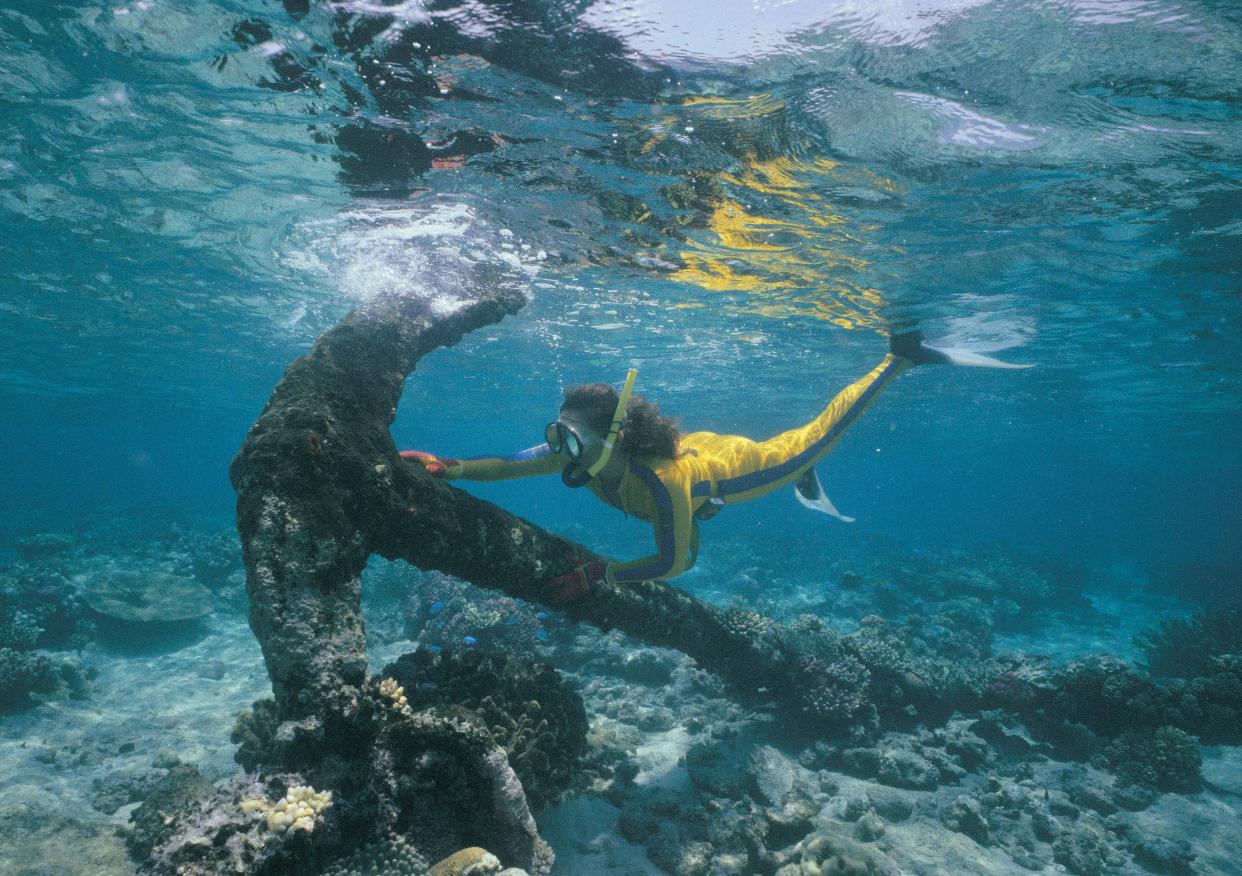Australia must do more to prevent ‘looting and destruction’ of underwater heritage, report says

The underwater world – from shipwrecks with human remains inside to First Nations sites that are tens of thousands of years old – needs better protection, a parliamentary committee has found.
Pirates have targeted second world war shipwrecks for scrap metal, looters have been trophy hunting in sunken boats and the bodies of drowned sailors have been disturbed in the process. Technological advancements mean Australia’s underwater cultural heritage is more vulnerable than ever, the committee heard.
Related: As ‘metal pirates’ loot seabed treasures, there are fears Australia’s first submarine could be next
The treaties committee released its report on Monday afternoon, recommending Australia ratify the convention on the protection of underwater cultural heritage. Australia helped draft the 2001 convention, and is a signatory to it, but has not yet ratified it and so is not bound by it.
Australia has about 8,000 underwater cultural heritage sites, which are mostly shipwrecks, but can include plane wrecks, cargo, and other significant sites.
Such sites have some protection under existing laws and the UN convention on the law of the sea, but ratifying the protection of underwater cultural heritage convention would better protect and preserve heritage that has been underwater for at least 100 years. It would harmonise and clarify existing laws and would allow Australia to encourage and support other nations in the region to sign up.
Dr Andrew Viduka, the assistant director of underwater cultural heritage at the Department of Climate Change, Energy, the Environment and Water, said ratifying the convention would enable Australia to “join and participate in the global community’s response to the looting and destruction of underwater cultural heritage”.
“It will enable Australia to assist in stopping the trafficking of stolen underwater cultural heritage artefacts or their movement through Australia,” he said.
“Looting of sites has the impact of not only removing artefacts and damaging the site but of disturbing or destroying the associated context of objects between each other. The looting of sites is akin to removing chapters from our history, with the loss never to be replaced and the story never to be told.”
Viduka said tens “if not hundreds” of second world war-era shipwrecks in the South China Sea had been looted for scrap metal over the last decade or so.
“In 2017 it was reported that ships in this area which contain the remains of approximately 4,500 Australian, British, American Dutch and Japanese servicemen have been impacted,” he said.
“This illegal activity continues today.”
Of the 8,000 Australian sites registered, just one is a First Nations site – the Brewarrina Aboriginal fish traps on the Barwon River in NSW.
The department is aware “anecdotally” of Australia’s first confirmed ancient underwater archaeological site off the Murujuga coastline in Western Australia, which was once dry land, it said.
The committee wrote, in its report, that protecting and preserving First Nations underwater cultural heritage was “of vital importance” and welcomed the evidence that Australia should do more to identify, protect and learn from it.
Viduka said First Nations underwater cultural heritage goes down to a depth of 132 to 135 metres across a timeline of 65,000 years. “Most First Nations heritage is between 40 and 70m below the present coastline, because that’s where the coastline was from 65,000 years ago to about 30,000 years ago,” he said.
The committee’s chair, the Labor MP Josh Wilson, said academics had reported that over the past 20,000 years, 2m square kilometres of Australia’s land mass had been submerged.
“This means that many historic Aboriginal and Torres Strait Islander sites – dating back thousands of years – lie underwater and can be protected, preserved or studied,” he said.
Wilson said all those who gave evidence supported the ratification, “many with considerable enthusiasm”.

 Yahoo News
Yahoo News 
